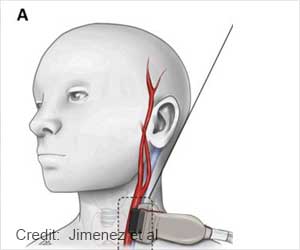The rate of hypertension-related visits has gone up more than 20 percent since 2006 across the United States.

‘People usually do not know they have hypertension or that their hypertension is uncontrolled because high blood pressure does not usually cause symptoms.’





Uncontrolled hypertension is a major treatable risk factor for the development of cardiovascular disease and a significant cause of death in the United States. Many people do not know they have hypertension or that their hypertension is uncontrolled because high blood pressure does not usually cause symptoms. "The study highlights how common hypertension is, and that it's becoming an even bigger problem affecting a large number of patients who seek care in the emergency department," McNaughton said. According to the authors, the increase may be related to the increasing prevalence of hypertension in the general population and greater public and clinician awareness of the disease.
In addition, the number of patients visiting emergency departments primarily to be treated for hypertension is on the rise -- about 6.4 million emergency department visits were identified involving patients seeking care for hypertension-related issues.
"Emergency department visits for patients with a primary diagnosis of hypertension were more likely among patients who were younger and less likely to have private health insurance," McNaughton said.
The researchers used information on emergency department visits from the Nationwide Emergency Department Sample, a database they have used previously to examine other illnesses, such as heart failure, atrial fibrillation and pneumonia.
Advertisement
These findings may serve to make health care providers more aware of hypertension-related issues, and it highlights the burden of hypertension among patients who seek emergency department care.For the public, "It speaks to the greater overall importance of hypertension and that lifestyle factors such as taking medication as prescribed, quitting smoking, exercising and eating less salt are all really important," McNaughton said.
Advertisement
"The role of the emergency department in the management of chronic disease is still poorly understood, with hypertension as an opportunity to show how we can safely use the emergency department to manage patients with these conditions," McNaughton said.
Source-Eurekalert











